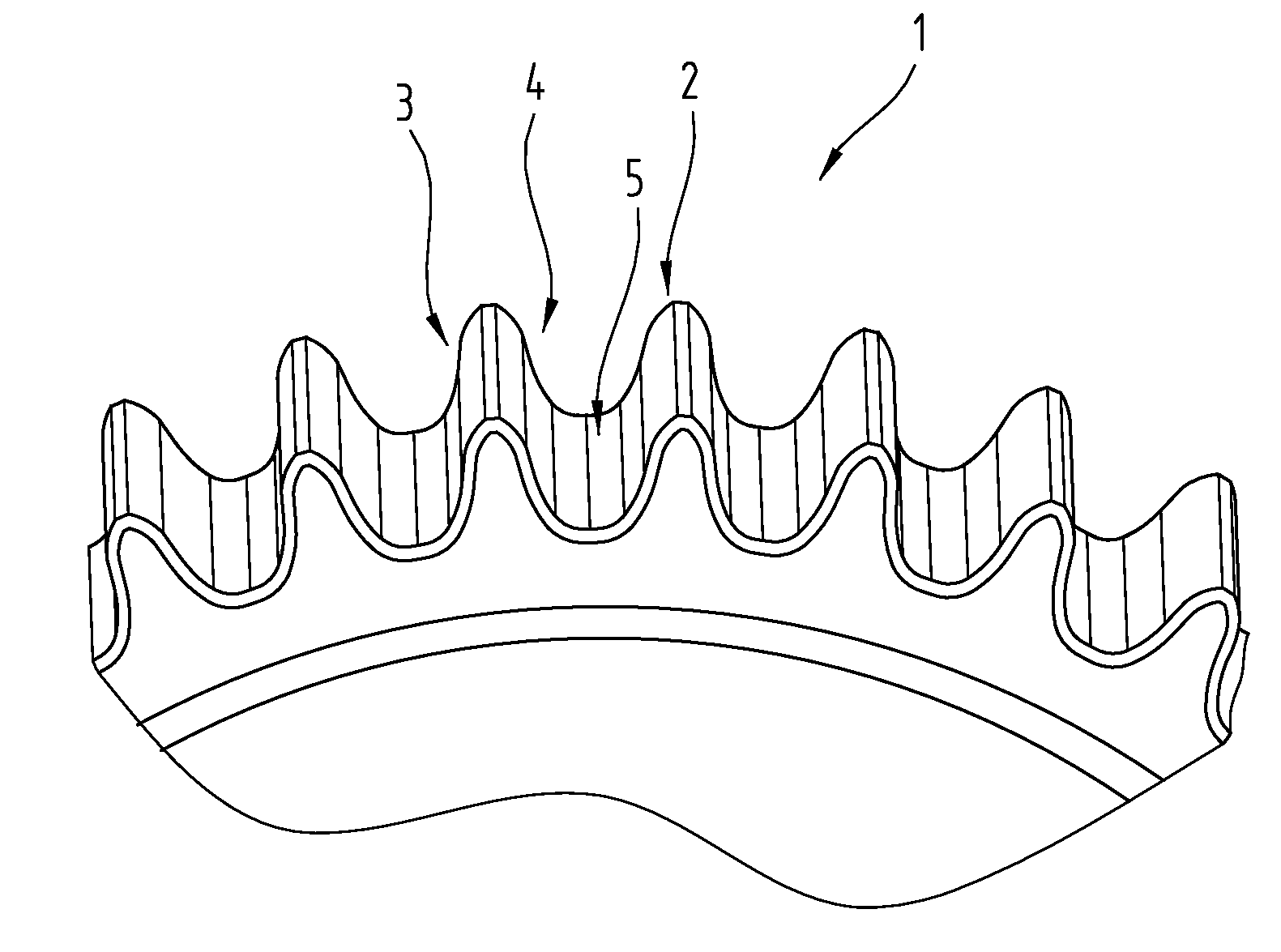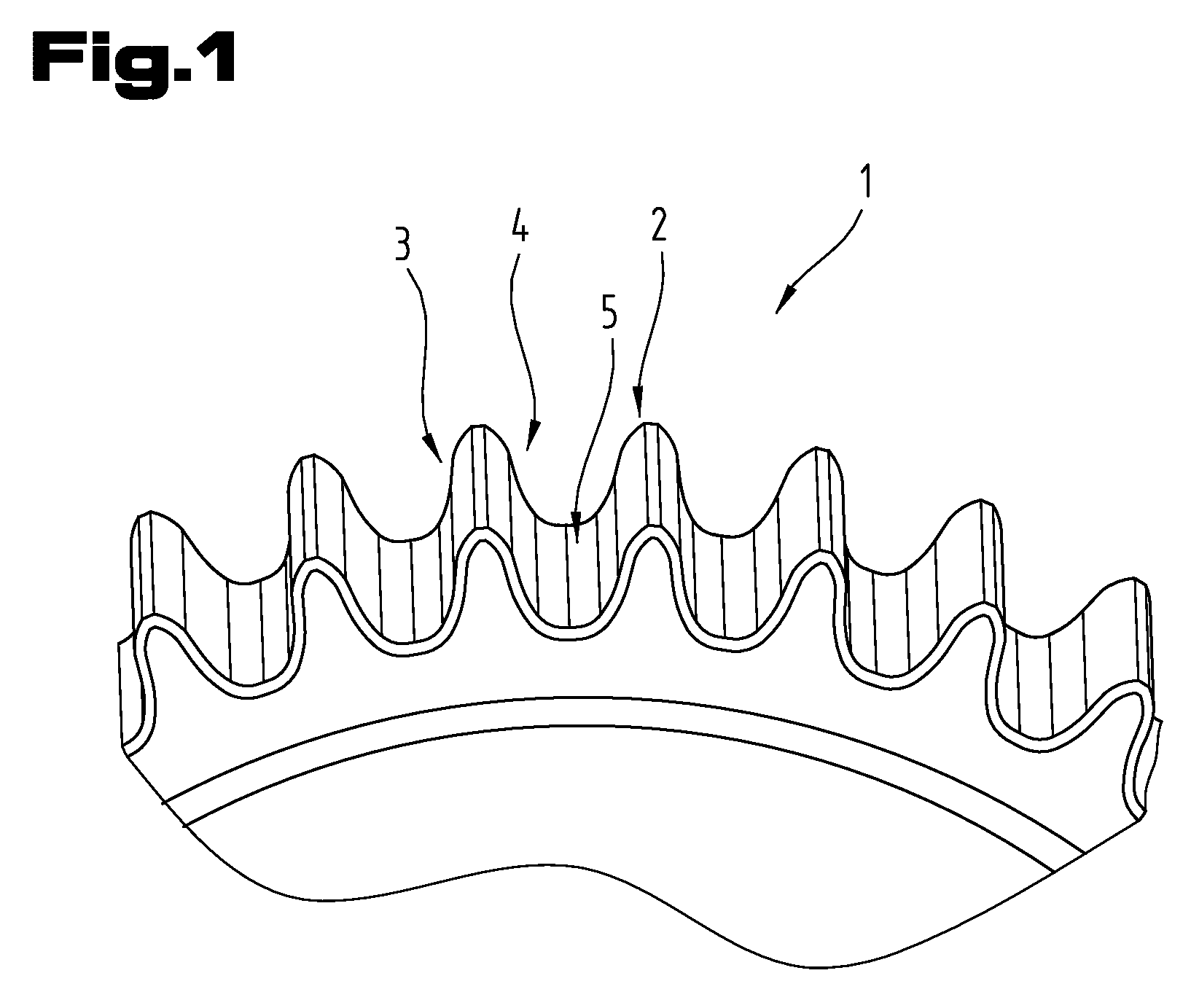Sintered gear
- Summary
- Abstract
- Description
- Claims
- Application Information
AI Technical Summary
Benefits of technology
Problems solved by technology
Method used
Image
Examples
example 1
[0032]An alloy powder of the following composition was used to produce a sintered gear 1 as proposed by the invention:
[0033]carbon 0.2% by weight, magnesium <0.1% by weight, molybdenum 0.85% by weight, the rest being iron with impurities induced by the manufacturing process.
[0034]This alloy powder was compacted at a pressure of 700 MPa to obtain a green compact and then sintered at a temperature in the range of between 1100° C. and 1350° C. This was followed by a calibration of the sintered gear 1 with the aid of a die by pressing it through the die.
[0035]As an alternative to pushing it through the die, the component may be ejected from the die in the direction in which it was introduced into it.
[0036]The resultant sintered gear 1 had a core density of ca. 6.9 g / cm3 and a surface density greater than 7.4 g / cm3.
[0037]It should be pointed out that the entire sintered gear 1 may be of approximately the core density if processing a non-compacted material.
[0038]Following the surface comp...
example 2
[0042]A sintered gear 1 was produced in the same way as explained in connection with example 1, care being taken to ensure that the surface of the tooth flanks 3, 4 and the tooth base 5 were of approximately the same hardness. This hardness was between 650 HV0.1 and 870 HV0.1. The pulsator test produced the same ratios as those given in example 1.
[0043]Both the sintered gear 1 based on example 1 and that based on example 2 had a residual porosity of max. 12% in the region of the surface of the tooth flanks 3, 4 and the tooth base. In particular, the residual porosity in example 1 was 5.1% and that based on example 2 was 4.5%.
example 3
[0044]Example 1 was essentially repeated and a grinding means with a grain size of 90 was used so that the surface of the tooth base 5 had a max. roughness profile value R3z, measured in accordance with DBN 31007, of 4.2 μm. The pulsator test produced the same ratios as specified in example 1.
OTHER EXAMPLES
[0045]Example 1 was repeated several times but the surface roughness was varied within ranges of 0.2 μm to 3.0 μm and the max. roughness profile value was varied within ranges of 0.3 μm to 15 μm. Results showed that particularly good ability to withstand mechanical stress was obtained in the ranges from 0.2 um to 2.0 μm for Ra and from 0.5 μm to 8 μm for R3z.
[0046]In addition to increasing strength, the method proposed by the invention has a side-effect in that toothing errors caused by the manufacturing process can be at least largely compensated.
[0047]The thermo-mechanical finishing process subjects the surface to a temperature stress selected from a range with a lower limit of ...
PUM
| Property | Measurement | Unit |
|---|---|---|
| Length | aaaaa | aaaaa |
| Length | aaaaa | aaaaa |
| Porosity | aaaaa | aaaaa |
Abstract
Description
Claims
Application Information
 Login to View More
Login to View More - R&D
- Intellectual Property
- Life Sciences
- Materials
- Tech Scout
- Unparalleled Data Quality
- Higher Quality Content
- 60% Fewer Hallucinations
Browse by: Latest US Patents, China's latest patents, Technical Efficacy Thesaurus, Application Domain, Technology Topic, Popular Technical Reports.
© 2025 PatSnap. All rights reserved.Legal|Privacy policy|Modern Slavery Act Transparency Statement|Sitemap|About US| Contact US: help@patsnap.com


